A couple of months ago, a friend of mine shared some photos that she had taken during a visit to the British Museum in London. A large stone relief in the Assyrian gallery appeared to show a pack mule being used, and further along was another relief that showed the hunting of wild asses. I knew that mules were used in the Assyrian empire but not their extent, so I started doing my own research to try and ascertain whether it really was a pack mule we were looking at or a domesticated ass. The result of that casual research is another edition of “badly put together articles musing on the historical importance of mules”. Enjoy!
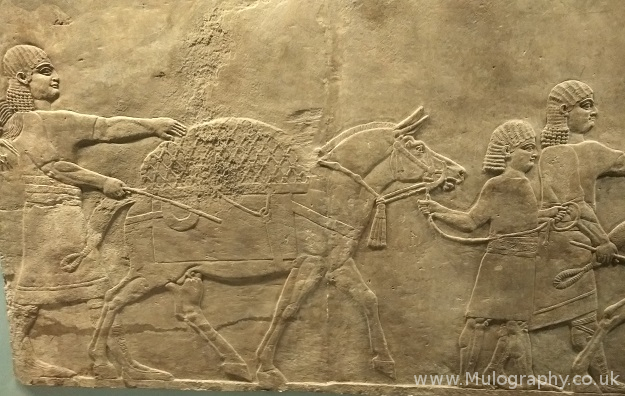
The Assyrian Empire was a Mesopotamian kingdom that existed between 2500 BC and 609 BC. Assyria itself was centred on what is now modern day Iraq, although during its reign the empire encompassed much of Turkey, Cyprus, Armenia, Saudi Arabia, Egypt, Kuwait, and Syria. For more on Assyria I’d suggest checking out this great entry in the Ancient History Encyclopedia. It’s a detailed and informative read despite failing to mention mules at any point.
If you’re after a short and uninformative read that isn’t written by a history professor but does involve mules, then carry on!
As with ancient Rome and medieval Europe, the mule in Assyria was a highly prized animal. According to Hittie law, a mule was worth one mina or forty shekels – this is twice the cost of a horse and twice the cost of a slave. Mules were slower to develop than horses and required extensive training, but a good mule was worth the initial time and expense. An Assyrian debt note dated 670 BC guarantees the return of a mule to its army commander with a penalty payment of thirty minas of silver. To give you an idea of how astronomical an amount that was, the average salary for a month of labour from an ordinary worker in Mesopotamia was one shekel. In On the Mammalia of the Assyrian Sculptures (1876), English author William Houghton states: “The mule of the Assyrian monuments represents an animal of excellent breed, and far superior to the animals we see in this country. This was to be expected, because not only was the climate more congenial to one of its parents, the ass, but because mules were in more request, and more attention would be paid to their breeding.”
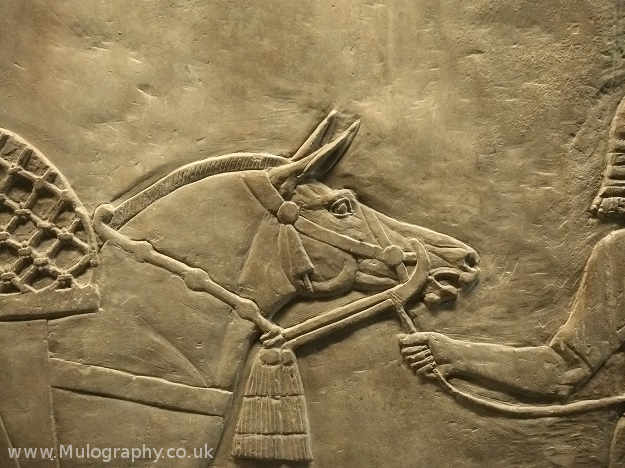

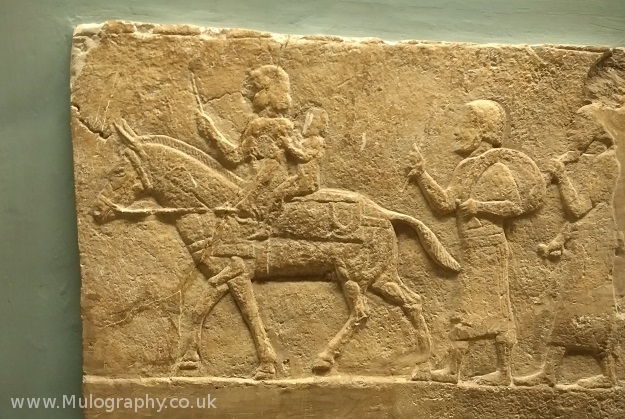
They were also associated with royalty; Zimri-Lin, King of Mari (an ancient city in Syria), chose to ride a mule when he went to meet his future father-in-law because he “wanted all to know that he was king of the Amorites”. Riding on a mule or donkey has been a sign of kingship since 3000 BC. As an aside, Zimri-Lin was a really interesting guy who, although not quite a pacifist, was defensive rather than aggressive and held women in high-esteem; unfortunately, after a falling out with Babylon, his city was attacked and looted, the royal archive was largely destroyed, and Zimri-Lin himself vanished without any historical trace. I don’t have anything further to add from a mule perspective – there’s supposed to be a poem involving Zimri-Lin and a mule, and I haven’t been able to find it – but I felt he deserved a mention.
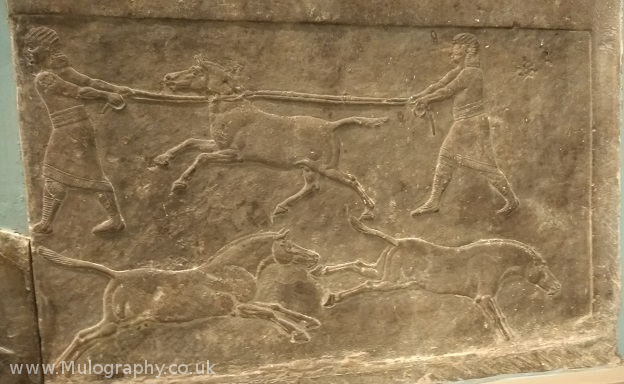
My particular interest in the mule’s role in ancient Assyria is that of the Assyrian communications network – the world’s first “pony express”, if you will. In the middle of the Neo-Assyrian Empire (8th century BC) a communication system was developed that enabled a relay team of military riders to pass messages quickly and reliably across vast distances. This network was only available for state business and was revolutionary for its time. The best thing about it from my point of view was that the riders were only mounted on mules.
It’s not considered scholarly to say that something is cool, but the mule express was very definitely cool. As stated above, the mule was a huge investment – less tractable than a horse, infertile, slower to mature, expensive to buy – but not only were these messengers riding mules, they also had a spare mule with them at all times. The messages being carried were important, and their delivery could not be delayed by a messenger on a lame steed; having two mules also meant that the rider could alternate between them and allow one to rest. This doubles the expense of the outfit but was clearly an expenditure that the Assyrians considered worth making.
A horse may have been swifter over shorter distances, but it would not have been as footsure; a mule who knew the route could pick its way across mountainous terrain in the dark, and would have been less likely to succumb to heat, illness and fatigue. Previously, messages would have been conferred by envoys but the innovative design of separating message from messenger meant that it could reach its destination much quicker. Post stations along the route would have provided a new rider with a fresh pair of mules who could immediately take the message on to the next leg of its journey, while the previous rider and mules rested. This way of transmitting a complex message was not surpassed in the Middle East until the invention of the telegraph.
The Assyrian state was the first in history to use mules for military purposes, and this is set a worldwide precedent that has continued right up to the modern day.
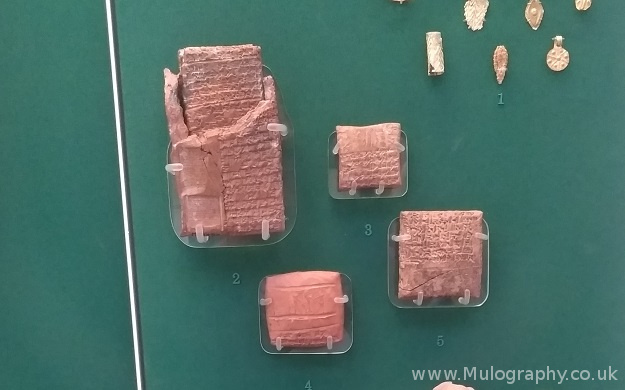
Extra: After spending several hours scrolling through various texts, visiting the British museum and peering intently at sculpture and artwork online and in person, I stumbled upon this Coursera video that literally explains everything I wanted to say about the “mule express” and in a much more articulate way. So I’d recommend watching it if you want to know more!
